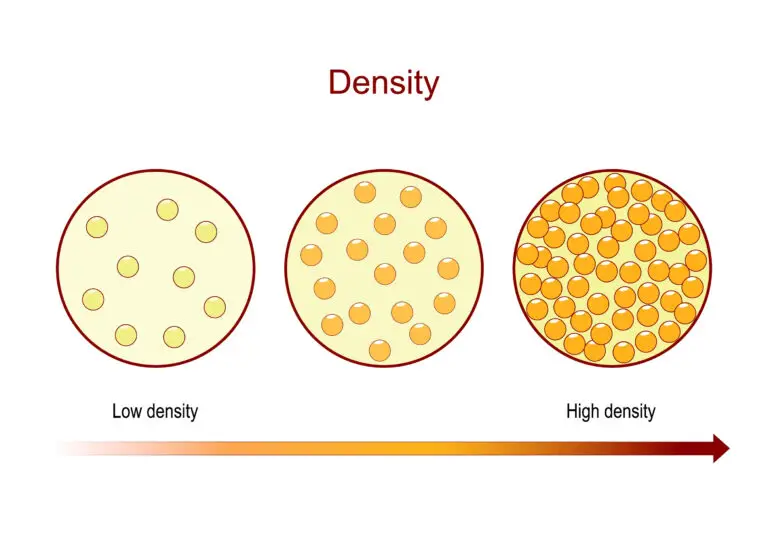Density

Table of Contents
What is Density?
Density represents how much mass is packed into a given volume of a substance.
The density (\rho) of a substance is determined by dividing its mass (m) by its volume (V). The formula to calculate density is:
\Large \rho = \frac{m}{V}
This equation indicates that if two objects are made of the same material but have different sizes, the larger object will have a greater mass and volume but the same density as the smaller object.
- Specific Volume: The specific volume (v) is the reciprocal of density and represents a substance’s volume per unit mass. Mathematically, it is expressed as:
\Large v = \frac{V}{M}
Consequently, the density can also be expressed as the inverse of the specific volume:
\Large \rho = \frac{1}{v}
Units of Density: The standard unit of density in the International System of Units (SI) is kilograms per cubic meter (kg/m³). However, other units like grams per cubic centimeter (g/cm³) or pounds per cubic foot (lb/ft³) might be used in different contexts.
Understanding Density
Relationship with Mass and Volume
Mass and Density: Density is proportional to mass, assuming the volume remains constant. This means that if the mass of a substance increases while its volume stays the same, the density will also increase.
For example, if more of a material is compressed into the same volume, the material becomes denser. This direct relationship can be observed in the density formula \rho \frac{m}{V}, where \rho is density, m is mass, and V is volume.
Volume and Density: Conversely, density is inversely proportional to volume, assuming the mass remains constant. This inverse relationship means that as the volume of a substance increases (while its mass remains unchanged), the density decreases.
Conversely, the density increases if the volume decreases (while the mass remains unchanged). In practical terms, when a substance expands (like ice forming from water), its volume increases without an increase in mass, leading to a decrease in density.
Density vs. Specific Gravity
Density: As previously discussed, density (\rho) is an absolute measure of mass per unit volume of a substance, typically expressed in units like kg/m³ or g/cm³. It quantifies how much mass is contained in a given volume of a material, regardless of the presence or characteristics of any other substance.
Specific Gravity: Specific gravity, often denoted as SG, is a dimensionless quantity that represents the ratio of the density of a substance to the density of a reference substance, usually water at 4°C (the temperature at which water has its maximum density). Mathematically, it is expressed as:
\Large SG=\frac{\text{Density of the substance}}{\text{Density of Water}}
Temperature and Pressure Effects
Temperature Effects: Generally, as the temperature of a substance increases, its density decreases, provided the pressure remains constant. Most substances expand when heated, increasing their volume while their mass remains unchanged.
For instance, when water is heated, the molecules move more rapidly, causing the water to expand and become less dense. However, water is a notable exception to this rule near its freezing point, reaching maximum density at approximately 4°C (39.2°F).
Pressure Effects: Conversely, increasing the pressure on a substance typically causes its density to increase, assuming temperature is constant. This is because applying pressure to a substance decreases its volume by forcing the particles closer together, making it denser. The relationship between pressure and volume is especially evident in highly compressible gases.
Importance and Applications of Density
- Identification of Substances: Density is a characteristic property that helps identify and differentiate substances. Different materials have distinct densities, allowing for material identification in various fields, such as chemistry, geology, and engineering.
- Density Gradients: Density gradients in fluids play a role in natural phenomena such as ocean currents, atmospheric circulation, and the stratification of liquids based on density (e.g., oil floating on water).
- Engineering and Materials Science: Density is crucial in designing and analyzing engineering disciplines’ materials, structures, and systems. For example, in civil engineering, density is considered in soil compaction and construction materials.
- Health and Medicine: Density measurements are used in medical diagnostics, such as determining bone density (important in osteoporosis diagnosis) or assessing body composition.
Related Links
Buoyancy
Fusion
Matter
Molecule